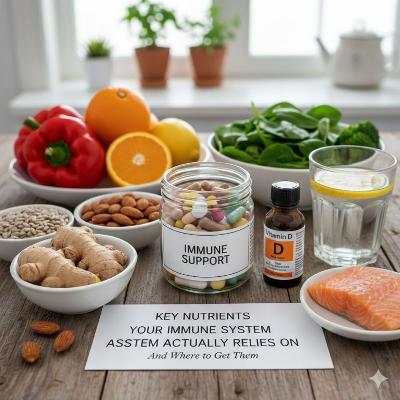Whiplash is a common term, frequently associated with car accidents, but there’s much more to it than often realized. This detailed guide aims to dive deep into the subject of whiplash. We’ll explore its various causes, identify its symptoms, discuss how it’s diagnosed, examine the available treatment options, and look into how it can be prevented. Understanding these aspects of whiplash will provide a clearer, more comprehensive view of this condition. Let’s navigate through the twists and turns of whiplash, shedding light on this often misunderstood injury.
What is Whiplash?
Whiplash is not just a term; it’s a forceful reality. Imagine your head as the pendulum of a clock, and suddenly, the clock stops, but your head keeps swinging forward and backward. This abrupt motion is what characterizes whiplash, typically resulting from rear-end car collisions. However, it’s not limited to car accidents; any sudden jerking of the head can lead to this neck strain.
The Mechanics Behind Whiplash
Understanding how whiplash happens can help us comprehend its impact. When a collision occurs, the head is thrown forward and then backward in rapid succession, causing the neck to hyperextend and then hyperflex. This sudden, forceful movement strains the muscles and ligaments in the neck, leading to the hallmark symptoms of whiplash.
Recognizing the Signs and Symptoms
Whiplash is a stealthy injury. Its symptoms may not manifest immediately, making it crucial to be vigilant in the aftermath of any incident involving rapid deceleration. Look out for:
- Neck Pain and Stiffness: The most common and immediate symptoms.
- Headaches: Persistent headaches that often originate from the base of the skull.
- Dizziness: Feeling lightheaded or dizzy could be a consequence of whiplash.
- Fatigue: The strain on the neck muscles may lead to general fatigue.
- Difficulty Concentrating: Whiplash might affect cognitive functions temporarily.
Seeking Medical Attention
If you suspect you have whiplash, it’s essential to seek medical attention promptly. A healthcare professional will conduct a thorough examination, possibly ordering imaging tests like X-rays or MRI scans to assess the extent of the injury. Prompt diagnosis is the key to effective treatment.
Seeking Compensation: When Whiplash Wasn’t Your Fault
If you find yourself nursing whiplash after an accident that wasn’t your fault, seeking whiplash compensation may be a viable option. In many cases, individuals injured due to the negligence of others have the right to pursue a personal injury claim. Here’s a brief overview:
1. Document the Incident:
Gathering evidence is crucial. Take photographs of the accident scene, any visible injuries, and obtain contact information from witnesses. This documentation can be valuable when presenting your case.
2. Seek Medical Attention:
A thorough medical examination not only ensures your well-being but also establishes a clear link between the accident and your injuries. Medical records serve as essential evidence in a personal injury claim.
3. Consult with Legal Professionals:
Enlisting the help of a personal injury attorney can be pivotal. They can assess the merits of your case, navigate legal complexities, and advocate for your rights. Many attorneys work on a contingency basis, meaning you only pay if they secure compensation for you.
4. Time Limitations:
Be aware of the statute of limitations for personal injury claims in your jurisdiction. Failing to file within the specified time frame may jeopardize your ability to seek compensation.
5. Communicate with Insurance Companies:
Report the accident to your insurance company promptly. However, exercise caution when discussing the details, and consider consulting with your attorney before making statements.
6. Damages and Compensation:
Personal injury claims typically seek compensation for medical expenses, lost wages, pain and suffering, and other damages. Keeping detailed records of expenses and the impact on your life strengthens your case.
Treatment Options
Whiplash treatment aims to alleviate pain, reduce inflammation, and restore normal neck function. Common approaches include:
- Pain Medications: Over-the-counter or prescription pain relievers can help manage pain.
- Physical Therapy: Tailored exercises can strengthen and restore flexibility to the neck muscles.
- Heat and Ice Therapy: Alternating between heat and ice applications can alleviate pain and reduce inflammation.
- Cervical Collars: In some cases, wearing a cervical collar may be recommended to limit neck movement and promote healing.
The Role of Rest and Patience
Patience is a virtue in whiplash recovery. While the desire to resume normal activities is understandable, allowing the neck adequate time to heal is crucial. Rushing the recovery process may exacerbate symptoms and prolong healing.
Preventive Measures
Preventing whiplash involves a combination of awareness and practical measures:
- Proper Headrest Adjustment: Ensuring your car’s headrest is at the correct height can mitigate the impact of a collision.
- Maintain a Safe Following Distance: Keeping a safe distance from the vehicle in front reduces the risk of rear-end collisions.
- Strengthen Neck Muscles: Engaging in exercises that strengthen neck muscles can provide added protection.
- Mindful Driving: Staying alert and aware while driving can help you react promptly to potential hazards.
Moving Forward
Understanding whiplash goes beyond medical jargon; it’s about grasping the impact it can have on individuals physically and emotionally. By recognizing the signs, seeking prompt medical attention, and embracing a patient-centric approach to recovery, individuals can navigate the road to healing.
Conclusion
This guide was designed to unravel the complexities of whiplash, providing a thorough explanation of its origins, symptoms, various treatment methods, and steps for prevention. Our goal is to promote knowledge and comprehension, empowering people to handle whiplash with determination. Recognizing that recovery is a process that demands patience, attentive care, and an all-encompassing approach to health is crucial in this journey.






